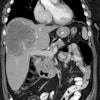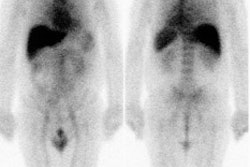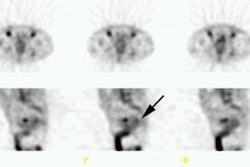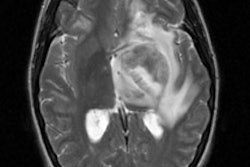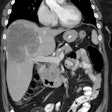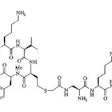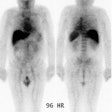J Nucl Med 2000 Oct;41(10):1657-63
FDG PET and immunoscintigraphy with 99mTc-labeled antibody fragments for
detection of the recurrence of colorectal carcinoma.
Willkomm P, Bender H, Bangard M, Decker P, Grunwald F, Biersack HJ.
The aim of this study was to compare FDG PET with a new monoclonal antibody-based imaging
agent that comprises an anti-carcinoembryonic antigen (CEA) monoclonal antibody Fab'
fragment directly labeled with 99mTc. METHODS: Twenty-eight patients who were previously
treated for colorectal carcinoma and in whom recurrence was suspected were examined with
FDG PET and immunoscintigraphy. The most common indications were an elevation of serum CEA
(13 patients), suggestive lesions documented by CT (9 patients), sonography (4 patients),
and severe constipation (2 patients). Planar imaging and SPECT were performed 4-6 h after
intravenous injection of the new imaging agent. Whole-body PET was performed 45-60 min
after intravenous injection of FDG. The findings were confirmed by conventional diagnostic
modalities, surgery, and histology. RESULTS: Histology confirmed local tumor recurrence in
9 of 28 patients. Clinical follow-up or CT confirmed the presence of liver metastases in 9
patients and lymph node involvement, lung metastases, and bone metastases in 2 patients
each. The new agent correctly detected 8 of 9 local recurrences, whereas FDG PET was able
to detect all 9 cases and in 1 case was false-positive. Liver metastases were confirmed in
9 patients by FDG PET but in only 1 patient by the new agent. Two cases with lymph node
metastases and 2 cases with lung metastases were correctly identified by FDG PET, but none
were detected by the new agent. Finally, bone metastases were identified in 1 patient by
FDG PET but not with the new agent, whereas bone marrow infiltration (n = 1) was diagnosed
by both imaging modalities. CONCLUSION: These results indicate that FDG PET and
99mTc-labeled anti-CEA Fab' are suitable for the diagnosis of local recurrence of
colorectal carcinoma but that FDG PET is clearly superior in the detection of distant
metastases (liver, bone, and lung) and lymph node involvement.

